Best Exercises to Strengthen Groin & Prevent Injuries
I. Introduction
Though it is the unsung hero of athletic performance, daily mobility, and long-term injury prevention, Groin strength typically goes under the radar for many fitness buffs. You always use your groin muscles to stabilize and move your hips whether you walk the dog every morning, run marathons, or play soccer.
What is Groin?
When we discuss the “groin,” we are talking to the junction of the pelvis and the upper thighs. Anaturally, the groin is home to a network of connective tissues, muscles, and tendons. Of these, the main muscles are the hip flexors—that is, the iliopsoas (iliacus and psoas major) and rectus femoris—and the adductors—that is, the adductor magnus, adductor longus, adductor brevis, gracilis, and pectineus. Together, these muscles enable you to conduct vital motions include flexing your hips, stabilizing your pelvis, and adduction—that is, bringing your legs toward the midline of your body.
Importance of Groin Strength
Since so many daily activities and sports pursuits center on the groin, having a strong foundation in this area offers several advantages. Strengthening your groin muscles specifically will produce:
- Enhanced Athletic Performance
In sports with quick directional changes, sprinting, or explosive leg motions, strong adductors and hip flexors help to increase speed, agility, and power. For example, repetitive side-to—-side maneuvers by soccer players depend mostly on strong groin muscles to guarantee effective and safe transitions. - Reduced Risk of Groin Strains and Pulls
Often resulting from weak or tight adductor muscles, many athletes have groin-related ailments. Targeting specific groin exercises helps you lower your possibilities of strains or pulls, thereby conserving your mobility and keeping you in the game. - Improved Overall Hip Stability and Mobility
Stability of your hips depends mostly on the muscles in your groin. Better stability allows you to perform lunges, squats, and other lower-body workouts under more control. More mobility in the groin area also helps daily motions—such as bending down or ascending stairs—feel more fluid and efficient. - Better Posture and Balance
Your hip flexors and adductors working in unison will help you to keep a more straight posture and balance on one leg will be easier. This advantage improves your capacity to stand and stroll steadily all day, outside of the field of competition.
Given how closely functional mobility depends on groin strength, it’s imperative to learn how to properly train this area. The sections that follow will go over a thorough warm-up schedule, the best exercises to strengthen groin, and key cooldown techniques to maintain your body feeling strong and resilient.
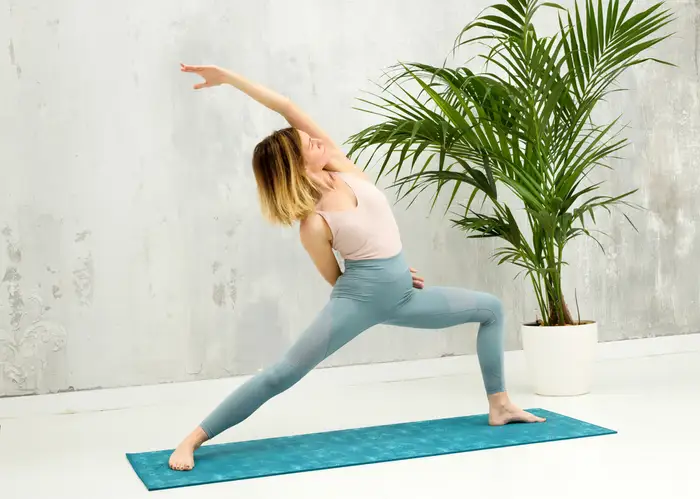
II. Warm-Up
Importance of Warming Up
One of the most important stages you should never miss is warming up. You must carefully prepare your joints and boost blood flow to your muscles before starting focused groin exercises or any high-intensity workout. Priming your body for activity greatly reduces your chance of strains and other ailments. A good warm-up also helps you execute the forthcoming workouts with better form and effectiveness.
Warm-Up Examples
Consider incorporating the following activities into your pre-workout routine:
- Light Cardio (Jogging, Jumping Jacks)
Spend five to ten minutes of modest aerobic exercise. Either a series of jumping jacks or a quick run around the block can raise your heart rate and warm your muscles. This first rise in blood flow enables your groin muscles to become more flexible, so facilitating more focused actions. - Dynamic Stretches (Leg Swings, Arm Circles)
Then, to get even more ready, use dynamic stretches. Leg swings—both front-to–back and side-to–side—can be quite helpful for your lower body in warming your hips and adductors. Maintaining control of the movement, progressively extend the range of motion. Arm circles will release your shoulders and upper body, so ensuring that your whole kinetic chain is ready for use. - Foam Rolling (Quadriceps, Hamstrings, Adductors)
On your main leg muscles—your quadriceps, hamstrings, and most crucially, your adductors—spend a few minutes rolling with foam. By helping to break up knots and adhesions in the muscle tissue, this self-myofascial release technique increases muscle activation during exercise and improves flexibility. Remember to breathe steadily and gently press each location for roughly thirty to sixty-second period.
Completing this warm-up program will help you to succeed by making sure your groin muscles are ready for the strengthening activities that lie ahead.
III. Best Exercises for Groin Strengthening
We will explore some of the best exercises to strengthen groin in this section. Targeting adductor muscles, hip flexors, and supporting stabilizers, these movements guarantee a complete approach to groin health. Maintaining good form and being aware of your body’s sensations can help you throughout this section. If you have any sharp discomfort, relax and see a specialist for direction.
1. Side-Lying Leg Raises
Target: Adductor Muscles
A cornerstone exercise for everyone trying to increase groin stability, side-lying leg lifts isolate and strengthen your adductor muscles.
Instructions
- lie on an exercise mat on your side. From head to toe, straight line your body as you stack your legs on top of one another.
- To maintain your spine neutral, prop your upper body up on your forearm or rest your head on your arm.
- After bending your upper leg, lay the foot flat on the floor ahead of your bottom leg. This stance increases your lower leg’s leverage, therefore helping you raise it.
- Engage your core, then gently straightly raise your lower leg a few inches off the surface.
- Spend a second in the posture then bring your leg back down. For 2–3 sets, try 8–12 repetitions per side.
Variations
- Single-Leg Focus: Extend the top leg in line with your body. For more difficulty, circle a resistance band around your ankles.
- Double-Leg Raises: Keep both legs stacked and then raise them both simultaneously if you wish a more advanced form. This version both pushes your core stability even more and works the adductors of both legs.
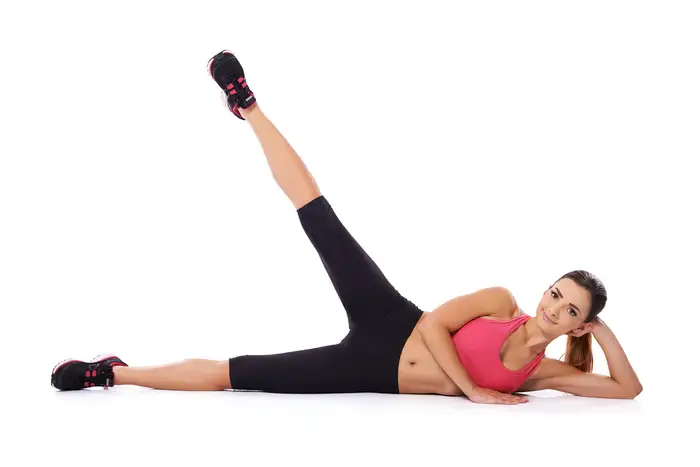
2. Standing Hip Abduction
Target: Abductors (Gluteus Medius, Minimus) and Hip Stability
You should not overlook the other muscles even if groin exercises concentrate mostly on adductors. By strengthening your abductors—mostly the gluteus medius and minimus—you develop balance around the hip joint, therefore enhancing general stability. This balance helps avoid compensatory tendencies and overuse that might cause groin problems.
Instructions
- Get straight and space your feet shoulder-width apart. For stability, grab a chair or wall.
- Use your core and slightly move your weight to one leg.
- Keeping your toes pointed forward, carefully raise your other leg out to the side.
- Stop momentarily at the peak and then bring your leg back to the beginning. For two to three sets, do 10–15 repetitions per leg.
Variations
- Resistance Band: Round your ankles or just above your knees a light to medium resistance band. This extra challenge to your hip abductors increases the intensity of the exercise.
- Cable Machine:If you have access to a gym, fastened on a low wire pulley, an ankle cuff This arrangement lets the resistance be constant all over the range of motion.
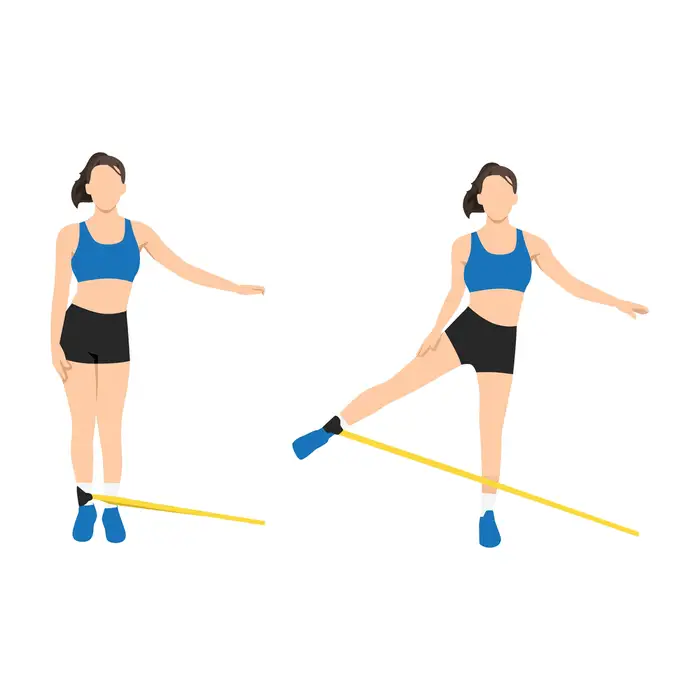
3. Cossack Squats
Target: Adductors, Quadriceps, Glutes
A dynamic workout targeted especially at the adductors, cossack squats also strike the quadriceps and glutes. For athletes who regularly pivot or change direction, the lateral (side to side) movement pattern enhances hip mobility and is a great choice.
Instructions
- Start with your feet widened beyond shoulder-width apart. Point your toes a little outward.
- As if you were sitting into a single-leg squat, shift your weight onto one leg, bending that knee and sliding your hips backward. Maintaining straightness of the other leg
- Maintaining your core engaged, keep your chest high. Make sure your bent knee follows your toes rather than collapses inward.
- As far as you can easily reach, lower yourself keeping good form. On the side of the straight leg, your adductors should feel quite stretched.
- Reversing your bowed leg, go back to the center. Then go back over the other side. For 2–3 sets, aim for 8–10 repetitions per side.
Proper Form Tips
- If at all possible keep your feet flat on the ground.
- If first you cannot sink extremely low, that is okay. Regular practice will increase your range of motion and flexibility.
- Maintaining balance requires slow, under control motions.
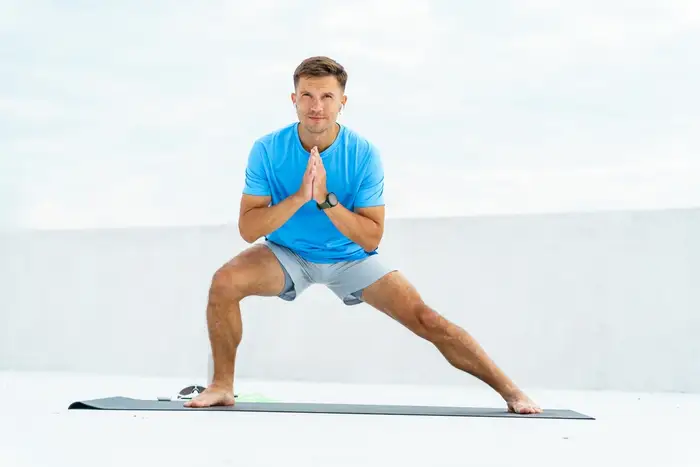
4. Plié Squats
Target: Adductors, Inner Thighs, Glutes
Emphasizing your inner thighs and glutes, plié squats—also called sumo squats—are quite good for working the adductors. When done with correct form, they also help increase core involvement.
Instructions
- With your feet wider than hip-width, turn out your toes about at a 45-degree angle.
- Use your core to keep your chest raised.
- Keeping your hips under your shoulders and avoiding letting your knees fold inward, descend your chest straight down bending your knees.
- Descend until, without curving your back, your thighs are parallel to the floor or as low as you can comfortably go.
- Press from your heels back to where you started. For two or three sets, complete 10–12 repetitions.
Variations
- Wide Stance: To focus more on the adductors, position your feet even more wide..
- Narrow Stance: If you have less flexibility or are concentrating on form, bring your feet closer.
- Weighted Plié Squats: For more resistance, toss in a dumbbell, kettlebell, or barbell. Holding a weight either at arm’s length or at chest level will test your lower body and core even more.
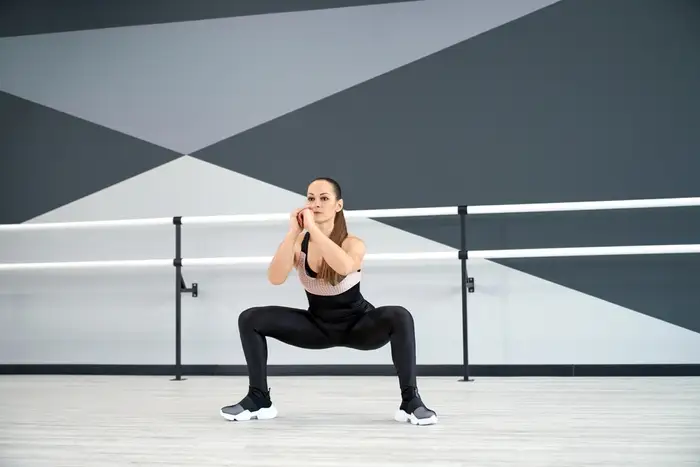
5. Glute Bridges
Target: Glutes, Hamstrings (Indirectly Strengthens Groin Stability)
Glute bridges mostly target your hamstrings and glues. To keep alignment, though, you will also activate your adductors and deep core muscles as correct technique calls for hip stability. Stronger glutes over time can help to improve hip performance and lessen groin compensatory strain.
Instructions
- Lie on your back on an exercise mat hip-width apart, knees bent and feet flat on the floor. Let your arms rest palms down at your sides.
- Engage your core, press your heels into the ground, then raise your hips off the floor. At the top, try to create a straight line from your shoulders to your knees.
- Starting at the top, squeeze your glutes then gently lower your hips back down. For 2–3 sets, repeat 10–15 times.
Variations
- Single-Leg Bridge: As you do the bridge, extend one leg skyward and use the other leg. This version gives hip stability and core involvement even more importance.
- Hip Thrust: Use a bench for upper-body support and lay a weight—such as a barbell or dumbbell—crossing your hips if you want to raise the difficulty.
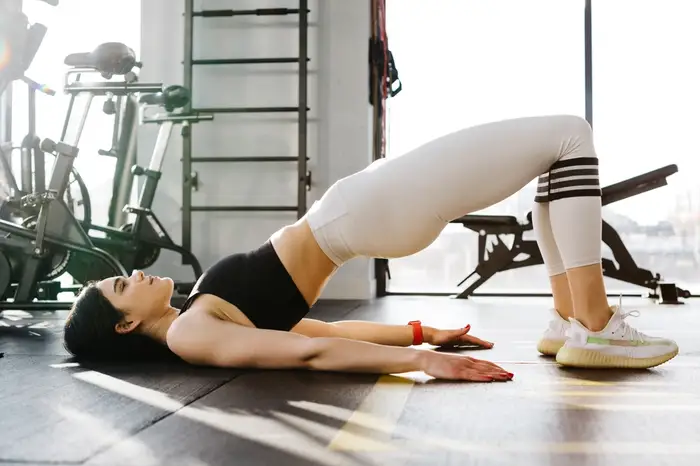
IV. Cool-Down
Importance of Cooling Down
Just as crucial as warming up is cooling down following a workout. You can prevent too much post-exercise muscle pain and increase general flexibility by progressively reducing your heart rate and extending your muscles. A planned cool-down also helps your body to gently return to its resting condition.
Cool-Down Examples
- Light Cardio (Walking)
Spend around five minutes at a leisureful pace walking. This mild exercise helps your heart rate revert to normal and releases some of the lactic acid accumulated during vigorous exercise. - Static Stretches (Holding Each Stretch for 30 Seconds)
- Adductor Stretch: Start on the floor with your legs spread widely. To feel a stretch along your inner thighs, slightly slant forward.
- Quad Stretch: Keeping your knees close together, stand and pull one foot toward your glues.
- Hamstring Stretch: Keeping your knees somewhat bent, stand and hinge at your hips, reaching for your toes—or as far as comfortable.
- Hip Flexor Stretch: Kneel on one knee, with the other foot frontward. To stretch the hip flexors, gently drive your hips forward.
Breathing deeply helps you relax; hold each stretch for roughly thirty seconds. Targeting these stretches helps the muscles surrounding your hips, groin, and legs to progressively relax and release tension.
V. Safety Considerations
Although exercises to strengthen groin will improve your general fitness, you still have to be careful with correct technique.
- Proper Form
Stress perfect form throughout all exercises. Your form is good, so you limit your risk of injury and target the correct muscles. Initially move slowly and focus on stimulating the appropriate muscle groups. If you are not confident about your alignment, think about analyzing your form using a mirror or a phone video recording. - Listen to Your Body
When you challenge yourself, you will naturally experience muscle tiredness or little soreness. Sharp pain or ongoing discomfort, however, is a warning sign that you might be overreaching. If you have any unexpected pain—especially in the lower back or the groin—moderate the intensity of the workout or see a doctor. - Consult with a Professional
See a physical therapist, sports medicine doctor, or qualified personal trainer if you have pre-existing injuries, chronic problems, or worries about your exercise program. These experts may provide specific advice and make sure your groin exercises fit your particular demands and objectives.
Following these safety guidelines will help you to boldly pursue a stronger groin and enjoy all the related performance and wellness advantages.
VI. Conclusion
Anyone looking for improved daily mobility, better athletic performance, and lower risk of injury needs to have strong groin strength. Strengthening the hip flexors and adductor muscles will help you to keep good posture, support your hips, and shift direction. Furthermore, regular practice of side-lying leg lifts, standing hip abduction, Cossack squats, plié squats, and glute bridges strengthens a strong basis that supports all element of lower-body movement.
